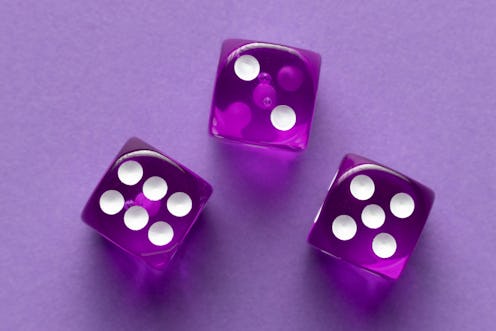Life

The research and exploration into psychic abilities started a long time ago, and psychic tests from history show the ebb of flow of something that has been mocked by some and revered by others. While the existence of psychic abilities, telekinesis, and other extrasensory phenomena have been debunked time and time again, there are — it must be known — cases and experiments where evidence was found in favor of humans possessing a sixth sense. The mind is a powerful thing, and various studies across the decades have found that simply thinking of something can influence an outcome.
The fields of traditional sciences don't exactly cater to the study of potential psychic powers. In fact, in 1988, the United States National Academy of Sciences concluded that there is "no scientific justification from research conducted over a period of 130 years for the existence of parapsychological phenomena." Rest assured, however, that this conclusion never stopped researchers from exploring. And while some studies came up empty-handed, others had their own endings.
History started paying notice to people with psychic abilities long ago (like Nostradamus, born in 1503), and the search for proof continues. These five studies are just some of the experiments conducted on the road to understanding psychic abilities.
1
Zener Cards
You've probably seen them before without knowing exactly what you were looking at. Zener cards got their start in the early 1930s, when Duke researcher and perceptual psychologist Karl Zener (along with a botanist named J.B. Rhine) designed and started using them to test students' extrasensory abilities. Zener and Rhine were on a mission to uncover the truth about ESP.
The cards each had a design on them — a circle, cross, wave, square, or star. These shapes were used on purpose, because each one has one more line than the other prior. Cards were held up to students (facing away from them, obviously) to see if they could correctly guess the design on the other side.
2
Ganzfeld Experiments
It was in the early 1970s that Charles Honorton came up with another way to test for ESP that's still used by some today. It's referred to as a ganzfeld experiment. Honorton used it to accomplish a state of sensory deprivation — which is the condition under which he claimed ESP could occur, because sensory input would be so greatly limited.
During a ganzfeld experiment, the participant is put in a relaxing room for a half hour with the halves of a ping pong ball over the eyes, and a red light shining on them. They also wear headphones playing white noise. While this is happening, another participant tries to mentally send information to the other person.
3
A Throw Of The Dice To Test Telekinesis
J.B. Rhine conducted so much research in the field that he actually deserves two spots on this list. In addition to having a hand in the creation and experimentation of Zener cards, he also started dabbling in die throwing, when a young man came to him in 1934 claiming he could control dice with his mind.
By the end of 1941, Rhine had tested over 650,000 die throws, concluding that telekinesis was possible. While his results were mixed and some of the effects he noticed were rather slight, the data was encouraging for those who believed.
4
A Coin-Tossing Machine
In the late 1970s, a Princeton undergraduate was working on her senior thesis using a random events generator (REG) to test if telekinesis could be real. Essentially, the REG was a coin-tossing machine, and participants tried to manipulate it to favor heads over tails, or vice versa.
The results showed a small but interesting finding: There was indeed a minor difference between the trials that involved a human participant and those that did not.
5
Moving Billiard Balls With Your Mind
Robert G. Jahn was the dean of the Princeton School of Engineering and Applied Sciences, and later founded the PEAR lab. One of their biggest studies involved dropping 9,000 billiard balls into 19 cartons. When no one was in the room, the balls consistently fell into the cartons in a cascading nature, with the center carton getting the most, and the cartons to the left and right getting fewer and fewer.
When a person was present in the room, however, and asked to attempt to psychically change the manner in which the billiard balls fell, the majority of them shifted to the right of center.